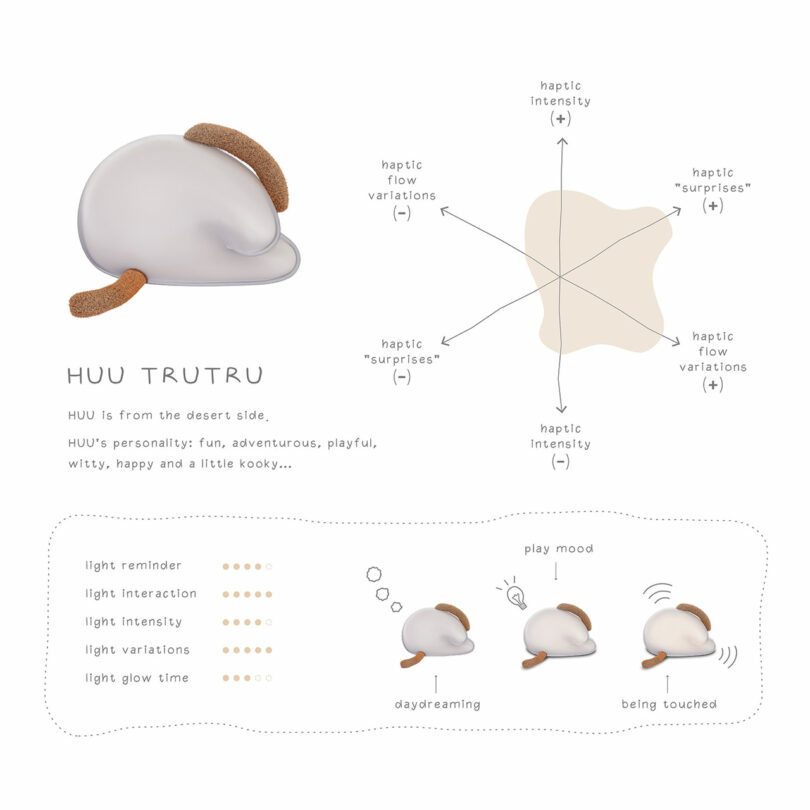
Today's links

They're just trying to earn a buck (permalink)
Life as a prisoner of the neoliberal mind palace must suck: it's a world where every person who suffers under predatory business practices is a "consumer" who has "revealed a preference" for being screwed:
https://pluralistic.net/2024/10/07/water-thats-not-wet/
And the companies doing the screwing? They're blameless: they're just rationally pursuing profits, upholding the fiduciary duty dictated by "shareholder supremacy":
https://pluralistic.net/2024/09/18/falsifiability/#figleaves-not-rubrics
In this Hayek-pilled cosmology, businesses are prisoners of the profit imperative and can be forgiven for everything, and the public are "consumers" whose bad choices are to blame for all the world's woes. It's a worldview with no room in it for political agency and no theory of power:
https://locusmag.com/feature/cory-doctorow-qualia/
The problem, of course, is that power is real, and it sets the rules of this game. Even if you stipulate that it is management's duty to do whatever they can to make the largest profit for the company's owners, "whatever they can do" isn't a free-floating concept. It is inescapably tethered to the rules of the game set by politics (that is, power).
A company cannot charge infinity dollars and pay its workers zero dollars. In the former case, customers might reasonably take their business elsewhere. In the latter case, workers might sell their labor elsewhere.
But if companies can capture their regulators and hijack power to change the rules of the game in their favor, they can go a long way to achieving both goals. An airport concessionaire on the sanitary side of the TSA checkpoint can charge $14 for a bottle of filtered tap water because exiting the checkpoint to shop elsewhere is a multi-hour affair and you'll miss your flight.
Now, the government could intervene here. The federal, state and local regulators overseeing the airport could require price-parity with the prevailing rate in town for water. They could ban obvious scams like stocking weird-sized water (or water with weird characteristics) at the airport that have no in-town equivalents. They could fill the airport with filtered water refill stations.
On the other hand, if the merchant can convince the government to collude with it in rigging the game, they can remove all the water fountains from the airport, and switch the bathroom taps to a non-potable "environmentally responsible" water source.
Likewise, an employer that can bind their workers to noncompete "agreements" can make it so difficult to switch jobs that workers accept a lower wage out of fear that their employer will use the power of the state to ruin them if they take a better job elsewhere:
https://pluralistic.net/2025/09/09/germanium-valley/#i-cant-quit-you
Even better, if the employer makes workers sign a "training repayment agreement provision" (TRAP) clause, they can literally ask the government to fine workers thousands of dollars for quitting their jobs:
https://pluralistic.net/2022/08/04/its-a-trap/#a-little-on-the-nose
When a firm rips you off or abuses you and gets away with it, that's not "fulfilling their fiduciary duty," it's cheating. They're either buying off the state that is supposed to protect you, or enlisting it to help them screw you. You don't need to make excuses for these fuckers. You can hate them and complain and warn other people. You can make them pariahs and shout mean things at them if you see them on the street.
Take Snapchat: the company has just done a bait-and-switch on its users, announcing that it will erase their saved photos and videos. Ironically, it calls these "memories," which means that it is threatening to erase its users' memories. Users who don't want their memories erased will have to pay stonking monthly fees:
https://www.bbc.com/news/articles/c4g5ypl6nkzo
Now, if Snapchat had an API that let you migrate your photos to a rival platform – or if the law would permit a rival to make a scraper to accomplish this without their help – then the rate that Snapchat chose for its monthly fee would reflect a calculation on these lines, "This is how long it takes to click one link on a rival service and port my account to it, and this is how much I value my time at, so this is how much I will pay to avoid making that one click."
But because Snapchat decides how you use its service, it can set a much higher price, calculated thus: "Here is how long it would take me to download gigabytes of saved storage, figure out how the filesystem on my device works, verify these files, and upload them to a rival platform, and here's how much I value my time, so this is how much I will pay to avoid this enormous, tedious task."
They get to charge you more because they are fucking you over, and they are fucking you over so they can charge you more.
If you heard about Snapchat's memory tax and thought to yourself, "Oh, those fools who signed up for Snapchat thinking it would be free forever were rooked by the world's most transparent ruse and have no one to blame but themselves!" then you've been rooked. The price that Snapchat arrived at – and Snapchat users' ability to get a better price – are both determined by regulation that tilts in favor of corporations at the public expense. No one came down off a mountain with two stone tablets bearing Snapchat's rate card.
Nor is it your job or mine to figure out how Snapchat can keep its lights on. The question, "Well, how can Snapchat keep providing a free service if it doesn't charge certain users through the nose?" is no more those users' problem than, "How can Snapchat users preserve their memories if Snapchat charges them more than they can afford, every month, until they die?" is Snapchat's problem.
"How can Snapchat stay in business?" sounds like a Snapchat problem, not a you problem (unless you work there or own its stock). Snapchat isn't a charity. It's a venture-backed, for-profit entity listed on the NYSE and NASDAQ. In a just world, we'd say that the public has the right to advocacy and protection from the state that is accountable to it, and companies that make bad decisions about their business models can eat shit and be bought out of bankruptcy by smarter people who don't blow up their own balance sheets.
If you want to live in a better world, then shut up that nagging, neoliberalism-trained reflex that treats corporations as charitable enterprises and "consumers" as the secret legislators of the market and the ultimate authors of all its dysfunctions.
Even for their most ardent defenders, markets are supposed to "process aggregated demand signals" about the willingness of different parties to accept different offers. But if the only "demand signal" you can offer is a binary "take it or leave it," that's a very thin data set (and it gets thinner still when "leave it" requires a time machine so you can go back to before you started and warn yourself that the offer's going to be altered adversely in the future).
There are a range of ways to respond to a worsening offer from a merchant, well beyond "take it or leave it." You can complain. You can sue. You can picket. You can boycott. You can spraypaint "GREEDY PIGS" on the corporate headquarters. This is a rich set of informational inputs for the market indeed.
When it comes to digital services, you have even more opportunities to program the great market computer in the sky (all hail the infallible market computer!). For example, if a company makes the ads on its webpage too obnoxious and invasive, you can install an ad-blocker, a thing that 51% of all web users have done, making it the largest consumer boycott in human history:
https://doc.searls.com/2023/11/11/how-is-the-worlds-biggest-boycott-doing/
An ad-blocker enriches the take-it-or-leave it, thin data-set of internet usage patterns by allowing users to make a counter-offer: "How about nah?"
https://www.eff.org/deeplinks/2019/07/adblocking-how-about-nah
Of course, no one has ever installed an ad-blocker for an app, because that's a felony under Section 1201 of the DMCA. An app is just a web-page skinned in the right kind of IP to make it a crime to protect yourself while you use it. That's why companies – like Snapchat – are insatiably horny to get you to switch from using websites to using apps.
Ultimately, I just don't think neoliberal economists believe in what they're selling. They don't want a market of "demand-signals" that can be used to guide allocations. They just want to help the greediest, worst people on earth screw you as hard as they can, all day long.
And then blame you for it.
Hey look at this (permalink)


Object permanence (permalink)
#20yrsago Lawmaker: I'll fight the Broadcast Flag https://web.archive.org/web/20071114231008/http://copyfight.corante.com/archives/2005/10/07/surprise_your_reps_actually_listen_when_you_complain_about_the_broadcast_flag.php
#20yrsago Google launches a feedreader https://web.archive.org/web/20090210070551/http://www.google.com/intl/en/googlereader/tour.html
#20yrsago Soviet PCs http://www.homecomputer.de/pages/easteurope_ussr.html
#20yrsago Soviet pocket-calculators https://web.archive.org/web/20051013063203/https://rk86.com/frolov/calcolle.htm
#20yrsago Bill Gates shouts at Sony CEO that his crappy DRM is less crappy https://web.archive.org/web/20051013082800/http://www.businessweek.com/technology/content/oct2005/tc2005106_9074_tc024.htm
#20yrsago Guy who was busted “for using lynx” found guilty https://web.archive.org/web/20051101013155/http://news.zdnet.co.uk/0,39020330,39226548,00.htm
#20yrsago It’s legal to break DRM in Australia, sez High Court https://www.smh.com.au/technology/court-allows-gamers-to-modify-consoles-20051006-gdm7bs.html
#15yrsago HOWTO make a Storm Trooper helmet out of a milk jug http://www.filthwizardry.com/2010/10/milk-jug-storm-trooper-helmet.html
#15yrsago Nigerian Sesame Street will feature HIV-positive muppet https://web.archive.org/web/20101006182715/https://edition.cnn.com/2010/SHOWBIZ/TV/10/06/sesame.street.nigeria/index.html
#15yrsago Norwegian musicians’ income goes up by 66% 1999-2009, while record sales decline by 50% https://appliedabstractions.com/2010/10/06/record-companies-lose-artists-gain/
#15yrsago USA caves on secret Internet treaty https://web.archive.org/web/20101007044555/https://www.michaelgeist.ca/content/view/5352/125/
#15yrsago NM cops raid Montessori School greenhouse for pot, find tomatoes https://web.archive.org/web/20101008023326/https://www.santafenewmexican.com/localnews/pot-raid-at-school-turns-up-tomatoes/
#15yrsago Steven Johnson’s Where Good Ideas Come From: multidisciplinary hymn to diversity, openness and creativity https://memex.craphound.com/2010/10/06/steven-johnsons-where-good-ideas-come-from-multidisciplinary-hymn-to-diversity-openness-and-creativity/
#10yrsago Kim Davis isn’t doing her job. Again. https://www.muckrock.com/news/archives/2015/oct/07/kim-davis-emails/
#10yrsago Howto make Zombie Mouth cupcakes https://www.instructables.com/Zombie-Mouth-Cupcake/#10yrsago
#10yrsago Algorithmic guilt: defendants must be able to inspect source code in forensic devices https://web.archive.org/web/20190421120433/https://slate.com/technology/2015/10/defendants-should-be-able-to-inspect-software-code-used-in-forensics.html
#10yrsago Make a booze flask hidden in a baby https://www.instructables.com/baby-flask/
#10yrsago NYPD steal black woman banker’s BMW, commit her when she asks for it back https://web.archive.org/web/20151002030408/https://www.alternet.org/civil-liberties/shes-banker-owns-bmw-and-obama-follows-her-twitter-ny-cops-still-threw-innocent
#10yrsago How guards and prosecutors retaliate against solitary confinement prisoners who blow the whistle https://web.archive.org/web/20151006195426/https://www.vice.com/read/unauthorized-group-activity-0000772-v22n10
#10yrsago What the barcode on your discarded boarding-pass reveals https://krebsonsecurity.com/2015/10/whats-in-a-boarding-pass-barcode-a-lot/
#10yrsago Bankers’ “Vulnerability Index”: scoring employees’ desperation https://www.rifters.com/crawl/?p=521
#10yrsago NZ government leaks on TPP: copyright terms will go to life plus 70 years https://web.archive.org/web/20151007185923/https://www.beehive.govt.nz/sites/all/files/TPP-Q&A-Oct-2015.pdf
#10yrsago What’s the objectively optimal copyright term? https://timharford.com/2015/10/copyrights-and-wrongs/
#10yrsago Genocide, not genes: indigenous peoples’ genetic alcoholism is a racist myth https://www.theverge.com/2015/10/2/9428659/firewater-racist-myth-alcoholism-native-americans
#10yrsago Global coalition tells Facebook to kill its Real Names policy https://www.eff.org/deeplinks/2015/10/global-coalition-facebook-authentic-names-are-authentically-dangerous-your-users
#10yrsago Primer explains the spying tech your local cops are using https://www.eff.org/deeplinks/2015/10/law-enforcement-tech-civilian-oversight-primer
#10yrsago EU top court: NSA spying means US servers are not a fit home for Europeans’ data https://www.eff.org/deeplinks/2015/10/europes-court-justice-nsa-surveilance
#5yrsago America's wild hog "pig bomb" https://pluralistic.net/2020/10/06/hybrid-vigor/#porcs
#5yrsago Maine's drunken, thieving, bumbling, child-porning public defenders https://pluralistic.net/2020/10/06/hybrid-vigor/#gideon-v-wainwright
#5yrsago Congress's Big Tech trustbusting smackdown https://pluralistic.net/2020/10/07/google-and-platos-cave/#break-em-up
#5yrsago Hackers can remotely lock IoT cock-cages https://pluralistic.net/2020/10/07/google-and-platos-cave/#power-play
#1yrago China hacked Verizon, AT&T and Lumen using the FBI's backdoor https://pluralistic.net/2024/10/07/foreseeable-outcomes/#calea
Upcoming appearances (permalink)

- Boston: Enshittification with Randall Munroe (Brattle Theater), Oct 7
https://www.eventbrite.com/e/cory-doctorow-at-the-brattle-theatre-tickets-1591235180259?aff=oddtdtcreator
-
DC: Enshittification with Rohit Chopra (Politics and Prose), Oct 8
https://politics-prose.com/cory-doctorow-10825
-
NYC: Enshittification with Lina Khan (Brooklyn Public Library), Oct 9
https://www.bklynlibrary.org/calendar/cory-doctorow-discusses-central-library-dweck-20251009-0700pm
-
New Orleans: DeepSouthCon63, Oct 10-12
http://www.contraflowscifi.org/
-
New Orleans: Enshittification at Octavia Books, Oct 12
https://www.octaviabooks.com/event/enshittification-cory-doctorow
-
Chicago: How Platforms Die with Rick Perlstein (University Club), Oct 14
https://www.eventbrite.com/e/how-platforms-die-with-cory-doctorow-tickets-1747916117159
-
Los Angeles: Enshittification with David Dayen (Diesel), Oct 16
https://dieselbookstore.com/event/2025-10-16/cory-doctorow-enshittification
-
San Francisco: Enshittification at Public Works with Jenny Odell (The Booksmith), Oct 20
https://app.gopassage.com/events/doctorow25
-
PDX: Enshittification at Powell's, Oct 21
https://www.powells.com/events/cory-doctorow-10-21-25
-
Seattle: Enshittification and the Rot Economy, with Ed Zitron (Clarion West), Oct 22
https://www.clarionwest.org/event/2025-deep-dives-cory-doctorow/
-
Vancouver: Enshittification with David Moscrop (Vancouver Writers Festival), Oct 23
https://www.showpass.com/2025-festival-39/
-
Montreal: Montreal Attention Forum keynote, Oct 24
https://www.attentionconferences.com/conferences/2025-forum
-
Montreal: Enshittification at Librarie Drawn and Quarterly, Oct 24
https://mtl.drawnandquarterly.com/events/3757420251024
-
Ottawa: Enshittification (Ottawa Writers Festival), Oct 25
https://writersfestival.org/events/fall-2025/enshittification
-
Toronto: Enshittification with Dan Werb (Type Books), Oct 27
https://www.instagram.com/p/DO81_1VDngu/?img_index=1
-
Barcelona: Conferencia EUROPEA 4D (Virtual), Oct 28
https://4d.cat/es/conferencia/
-
Miami: Enshittification at Books & Books, Nov 5
https://www.eventbrite.com/e/an-evening-with-cory-doctorow-tickets-1504647263469
-
Miami: Cloudfest, Nov 6
https://www.cloudfest.com/usa/
-
Burbank: Burbank Book Festival, Nov 8
https://www.burbankbookfestival.com/
-
Lisbon: A post-American, enshittification-resistant internet, with Rabble (Web Summit), Nov 12
https://websummit.com/sessions/lis25/92f47bc9-ca60-4997-bef3-006735b1f9c5/a-post-american-enshittification-resistant-internet/
-
Cardiff: Hay Festival After Hours, Nov 13
https://www.hayfestival.com/c-203-hay-festival-after-hours.aspx

Recent appearances (permalink)

- "Picks and Shovels": a sequel to "Red Team Blues," about the heroic era of the PC, Tor Books (US), Head of Zeus (UK), February 2025 (https://us.macmillan.com/books/9781250865908/picksandshovels).
-
"The Bezzle": a sequel to "Red Team Blues," about prison-tech and other grifts, Tor Books (US), Head of Zeus (UK), February 2024 (the-bezzle.org).
-
"The Lost Cause:" a solarpunk novel of hope in the climate emergency, Tor Books (US), Head of Zeus (UK), November 2023 (http://lost-cause.org).
-
"The Internet Con": A nonfiction book about interoperability and Big Tech (Verso) September 2023 (http://seizethemeansofcomputation.org). Signed copies at Book Soup (https://www.booksoup.com/book/9781804291245).
-
"Red Team Blues": "A grabby, compulsive thriller that will leave you knowing more about how the world works than you did before." Tor Books http://redteamblues.com.
-
"Chokepoint Capitalism: How to Beat Big Tech, Tame Big Content, and Get Artists Paid, with Rebecca Giblin", on how to unrig the markets for creative labor, Beacon Press/Scribe 2022 https://chokepointcapitalism.com

- "Canny Valley": A limited edition collection of the collages I create for Pluralistic, self-published, September 2025
-
"Enshittification: Why Everything Suddenly Got Worse and What to Do About It," Farrar, Straus, Giroux, October 7 2025
https://us.macmillan.com/books/9780374619329/enshittification/
-
"Unauthorized Bread": a middle-grades graphic novel adapted from my novella about refugees, toasters and DRM, FirstSecond, 2026
-
"Enshittification, Why Everything Suddenly Got Worse and What to Do About It" (the graphic novel), Firstsecond, 2026
-
"The Memex Method," Farrar, Straus, Giroux, 2026
-
"The Reverse-Centaur's Guide to AI," a short book about being a better AI critic, Farrar, Straus and Giroux, 2026

Today's top sources:
Currently writing:

This work – excluding any serialized fiction – is licensed under a Creative Commons Attribution 4.0 license. That means you can use it any way you like, including commercially, provided that you attribute it to me, Cory Doctorow, and include a link to pluralistic.net.
https://creativecommons.org/licenses/by/4.0/
Quotations and images are not included in this license; they are included either under a limitation or exception to copyright, or on the basis of a separate license. Please exercise caution.
How to get Pluralistic:
Blog (no ads, tracking, or data-collection):
Pluralistic.net
Newsletter (no ads, tracking, or data-collection):
https://pluralistic.net/plura-list
Mastodon (no ads, tracking, or data-collection):
https://mamot.fr/@pluralistic
Medium (no ads, paywalled):
https://doctorow.medium.com/
Twitter (mass-scale, unrestricted, third-party surveillance and advertising):
https://twitter.com/doctorow
Tumblr (mass-scale, unrestricted, third-party surveillance and advertising):
https://mostlysignssomeportents.tumblr.com/tagged/pluralistic
"When life gives you SARS, you make sarsaparilla" -Joey "Accordion Guy" DeVilla
READ CAREFULLY: By reading this, you agree, on behalf of your employer, to release me from all obligations and waivers arising from any and all NON-NEGOTIATED agreements, licenses, terms-of-service, shrinkwrap, clickwrap, browsewrap, confidentiality, non-disclosure, non-compete and acceptable use policies ("BOGUS AGREEMENTS") that I have entered into with your employer, its partners, licensors, agents and assigns, in perpetuity, without prejudice to my ongoing rights and privileges. You further represent that you have the authority to release me from any BOGUS AGREEMENTS on behalf of your employer.
ISSN: 3066-764X













































